Giving new life to old windows: Easthampton restoration specialist’s most recent project involves venerable Manhattan church
| Published: 11-15-2023 2:29 PM |
EASTHAMPTON — A portion of New York City’s historic Riverside Church currently resides in Easthampton, where window panels fill crates and tables at Shalan Stained Glass as they undergo restoration.
Over the past year, craftsman Glenn Shalan has been documenting, disassembling and mending 28 stained and leaded glass windows for the church’s triforium, or the area of the inside of the building that opens onto the nave from above the side aisles. The work is part of a larger project involving four other stained glass studios restoring a total of 54 windows in the church.
“There’s definitely a satisfaction in taking something that’s really old, a window that’s falling apart, and bringing it back,” Shalan said, leaning against a table in his studio, his fingertips coated in black residue from his work.
“We’re sort of respecting its history, but at the same time giving it new life,” he added.
Shalan, who has 41 years of experience in stained glass, started out doing stained glass work as a hobby after he graduated from college.
“I made little gift items — jewelry boxes, lamps, things like that,” Shalan said. “I didn’t get very far with it, and I thought maybe I should go back to school and get a ‘real job.’”
At his last craft fair, a stained glass studio owner came upon Shalan’s work and offered him an apprenticeship in New York.
After years of learning the ropes working in New York and Massachusetts, Shalan opened his own studio in the Berkshires in 2006, before finally opening Shalan Stained Glass at the Paragon Arts and Industry Building in Easthampton in 2018.
Article continues after...
Yesterday's Most Read Articles
Since then, his studio has restored windows for the James Blake House in Boston, The Lutheran Church of Reformation in Washington, D.C., and St. Thomas Church in New York City, among other projects.
“I like the problem solving part of it… the whole conservation process of taking an older piece and having to put it back together,” Shalan said.
While Shalan, typically working alone but sometimes contracting with one other person, is mostly involved in restoration of stained and leaded glass windows for churches, public buildings and private residences, he also designs and fabricates new stained glass windows in a variety of architectural styles.
“One of the main differences between doing restoration work and new work is that new work is your own creation and your own window, but with restoration work, I’m sort of responsible for somebody else’s windows,” Shalan said. “You’re taking care of something that’s very important to someone else.”
Shalan got involved in the Riverside Church project in August 2022, after Massachusetts consultant Julie Sloan — who he had worked with on other projects — invited his studio to be one of five to restore the windows.
The Riverside Church, established in 1930, is an interdenominational church located in Manhattan. It was designed in the Gothic Revival Style, known for pointed arches, flying buttresses, lacy ornamental work, and of course, stained glass windows.
The church was designated by the New York City Landmarks Preservation Commission as a city landmark in 2000 and was listed on the National Register of Historic Places in 2012.
The Riverside Church windows were designed by Harry Wright Goodhue, a Cambridge stained glass artist.
According to the Corning Museum of Glass, though Wright Goodhue died at 26 years old, he designed windows for over 30 churches during his short career.
“Even though he was only doing stained glass work for 10 or 12 years, he did some significant projects,” Shalan said, adding that some other notable projects included work at the Princeton University Chapel and Columbia University.
As for the Riverside Church windows themselves, Shalan said that “they’re not overly interesting windows.”
“It’s an interesting church, but… to me, the windows, they’re kind of heavy,” he said, and added that the glass is painted on both sides, a relatively uncommon choice.
After the windows are removed from their respective openings on-site, they are transported in crates to Shalan’s studio. There, he begins by documenting the windows so that the next time they need to be restored — in about 100 years — the church will have a record if something happens to the window.
Typically listening to music, Shalan then disassembles the window by cutting through the lead strips that hold together the glass starting from one corner and working his way up. He cleans each individual piece of glass, and wherever needed, mends broken pieces of glass with silicone or epoxy.
“The lead is expendable; we’re getting rid of that, but the glass, that’s the history of the window. That’s what we’re trying to save,” said Shalan, adding that glass will essentially last forever unless broken by stress.
For the pieces of glass that are missing or broken beyond repair, mostly edge pieces, Shalan contracts out to a glass painter who creates new glass pieces that match the original color and style.
Shalan then forms new strips of lead around the glass and reassembles the window from the bottom up, soldering at the joints and then waterproofing the entire window.
One window takes around a week or so to complete, and once Shalan’s in-studio restoration finishes, the windows will be crated back up and sent back to the church for reinstallation in their original openings, where they will stay for another century or so before being restored once again. Some windows will be reinstalled in March 2024, and others in October 2024.
“It’s wonderful to have that opportunity to do work in historically significant buildings… It’s kind of a neat thing,” Shalan said.
Maddie Fabian can be reached at mfabian@gazettenet.com.

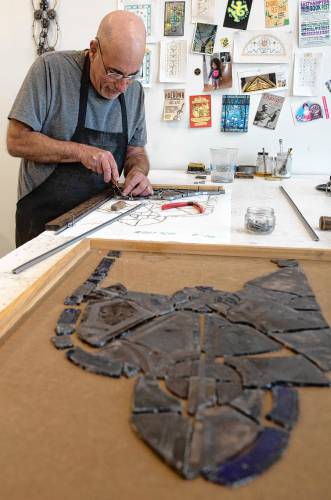
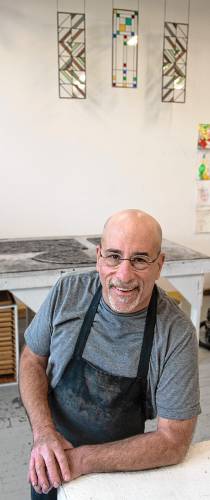
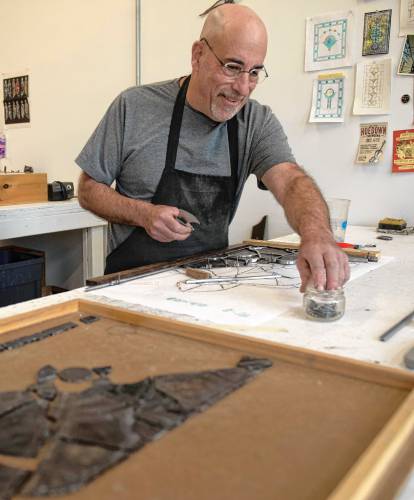
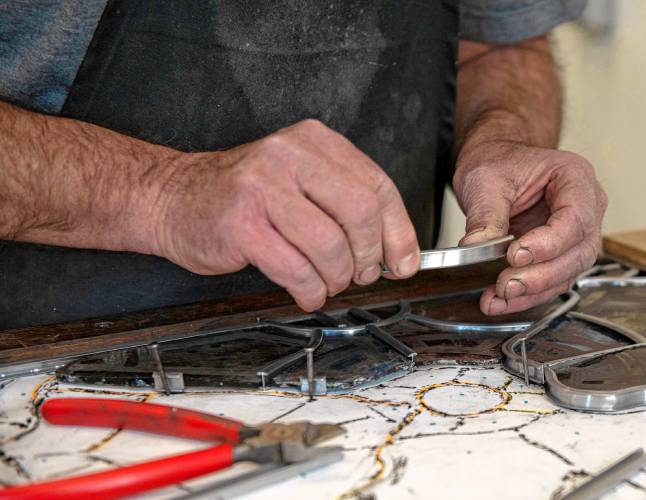
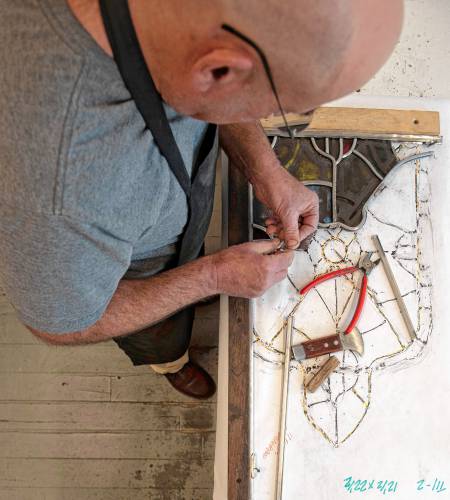
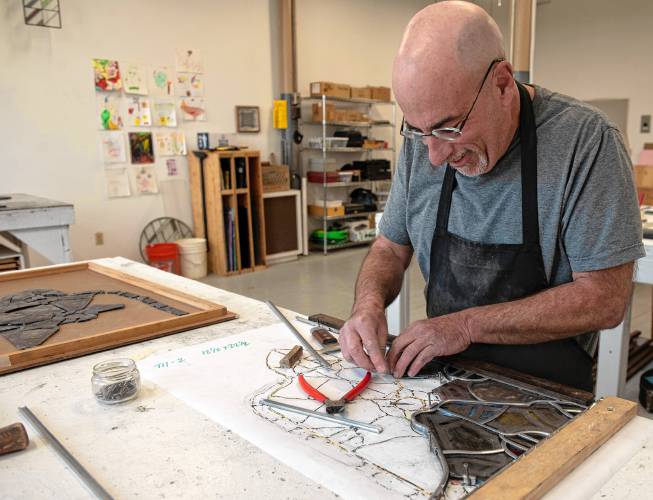
 Valley lawmakers seek shorter license for FirstLight hydropower projects
Valley lawmakers seek shorter license for FirstLight hydropower projects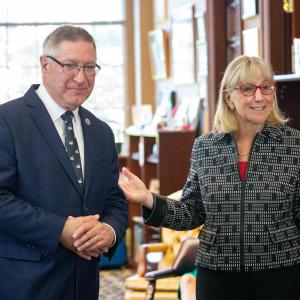 State Senate budget funds free community college for all
State Senate budget funds free community college for all ‘We can just be who we are’: Thousands show support for LGBTQ community at Hampshire Pride
‘We can just be who we are’: Thousands show support for LGBTQ community at Hampshire Pride Doors open at Tilton Library’s temporary home at South Deerfield Congregational Church
Doors open at Tilton Library’s temporary home at South Deerfield Congregational Church
